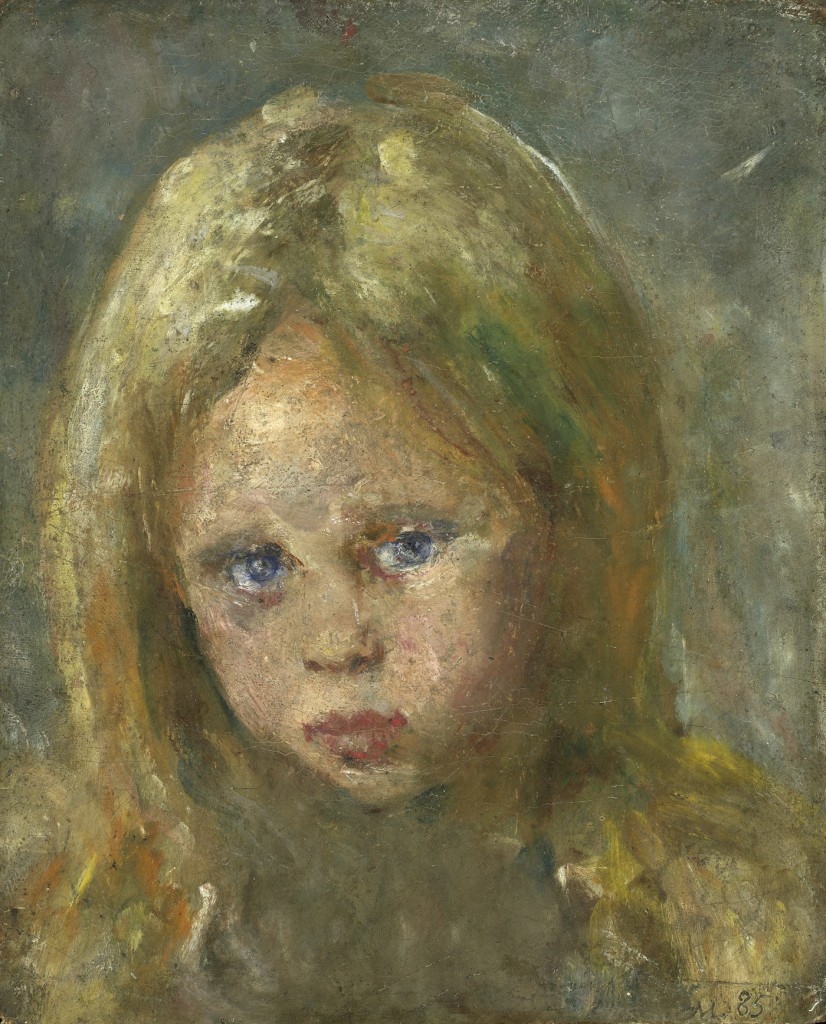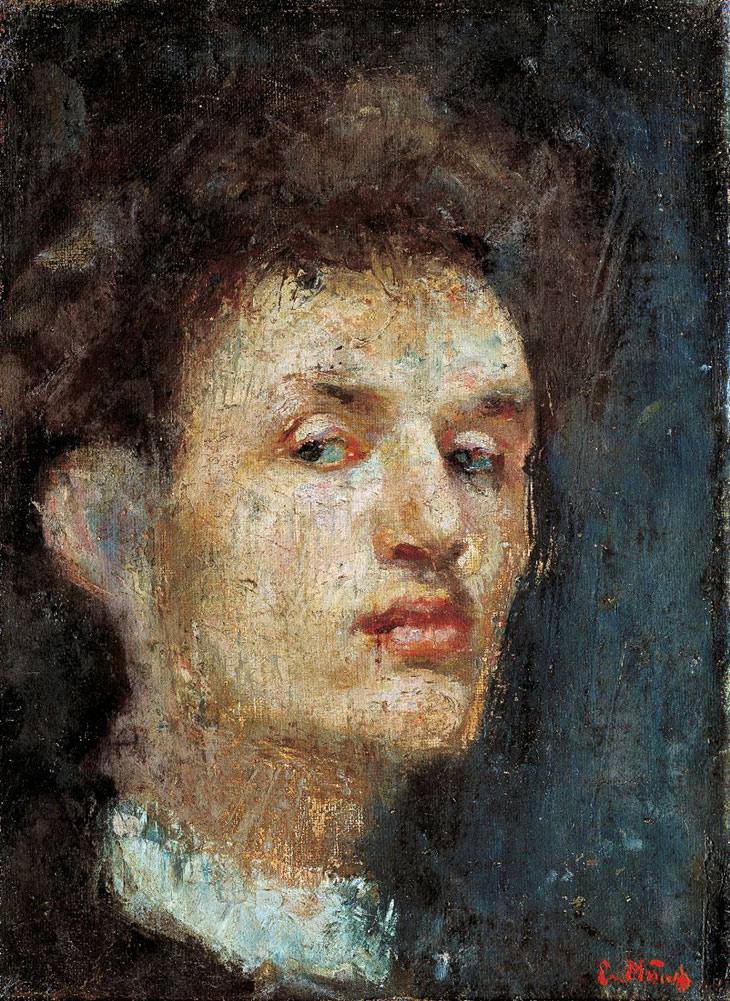Edvard Munch (Løten 1863 - 1944 Ekely/Oslo)
Portrait of a Young Girl, 1885
Oil on canvas, 34 x 28 cm
Signed with the initials and dated lower right EM 85
Provenance:
Conrad Langaard (to 1947)
Margrethe Langaard (to 1951)
Kaare Berntsen A/S, Oslo
Private collection, Trondheim
Private collection, Oslo
Exhibited:
Edvard Munch Utstilling, Malerier, akvareller, tegninger, grafikk, Oslo, Kunstnernes Hus, 1951, no. 29
Edvard Munch: Signs of modern art, Basel, Fondation Beyeler, 2007, no. 4
Munch becoming «Munch»: Artistic strategies 1880-1892, Oslo, Munch-museet, 2008-9, no. 60
Edvard Munch, Rotterdam, Kunsthal, and Paris, Pinacothèque de Paris, 2010, no. 8
Literature:
Gerd Woll, Edvard Munch. Samlede Malerier, catalogue raisonné, I, Oslo 2008, no. 118
Dieter Buchhart (ed.), Edvard Munch. Zeichen der Moderne, Fondation Beyeler, Basel, 2007, fig. 4
This very sensitive portrait, titled Portrait of a Young Girl, executed in 1885, owes much to a journey Munch made to Paris and Antwerp in the same year. It is infused with the intimacy and emotional power characteristic of many of his portraits of the period, see fig 1. These portraits form a distinct group and this group is dominated by one of his key works – the earliest highlight of his career, The Sick Child, painted in 1885-6.1 All the paintings in the group are distinguished by a newly discovered, highly unconventional handling of the subject matter in a style that had little to do with the naturalism of the period.
Fig. 1 Edvard Munch, Self-portrait, 1886, oil on canvas, 33 x 24.5 cm., The National Museum of Art, Architecture and Design, Oslo
The Munch expert Dieter Buchhart writes:
In the unconventional brushwork of paintings like The Sick Child and the Self-Portrait, both executed in 1885-6, he [Munch] distances himself from naturalism. He applies the paint directly, in layers, frequently scratching out and repainting entire areas or making deep incisions into the surface of the paint. The resulting works are extraordinarily vibrant, richly textured and haptic in quality. The thick, scraped paint surfaces incorporate the savagery of his working methods.2
Munch first exhibited The Sick Child at the Autumn Salon3 in Christiania in 1886. The painting, which he described as a ‘study’, caused mounting public outrage, but not so much because of the subject matter or his handling of it as because of the unconventionality of his painterly technique. In his memoirs he noted: I repainted the picture frequently over the course of a year, scratched it out, let the paint run – and tried repeatedly to bring out the first impression on the canvas – the pale, translucent skin, the quivering mouth, the trembling hands.4 He has used the same technique to paint Portrait of a Young Girl, also executed in the same year.
1 The Sick Child, first version 1885-6, Nasjonalmuseet for kunst, Oslo; other important works in the group are Self-Portrait, 1885-6, Nasjonalmuseet for kunst, Oslo; Portrait of Betzy Nielsen, 1887, Nasjonalmuseet for kunst, Oslo; Red-haired Girl with White Rat, 1886, Kunstmuseum Basel; Wild Flower Meadow, Veierland, 1887, Nasjonalmuseet for kunst, Oslo.
2 See exhib. cat., Basel, op. cit., p.42, 1880-1892. Munch als radikaler Neuerer in Auseinandersetzung mit Naturalismus, Impressionismus und Symbolismus.
3 Hostutstillingen, official title: Kunstudstillingen.
4 Edvard Munch, Livsfrisens tilblivelse, Oslo, ND (but probably 1929), p. 9: Das Bild malte ich im Laufe eines Jahres – häufige Male um, kratzte es aus, ließ es im Malmittel zerfließen – und versuchte wieder und wieder den ersten Eindruck herauszubekommen, die durchscheinende, blasse Haut auf der Leinwand, den zitternden Mund, die zitternden Hände.


